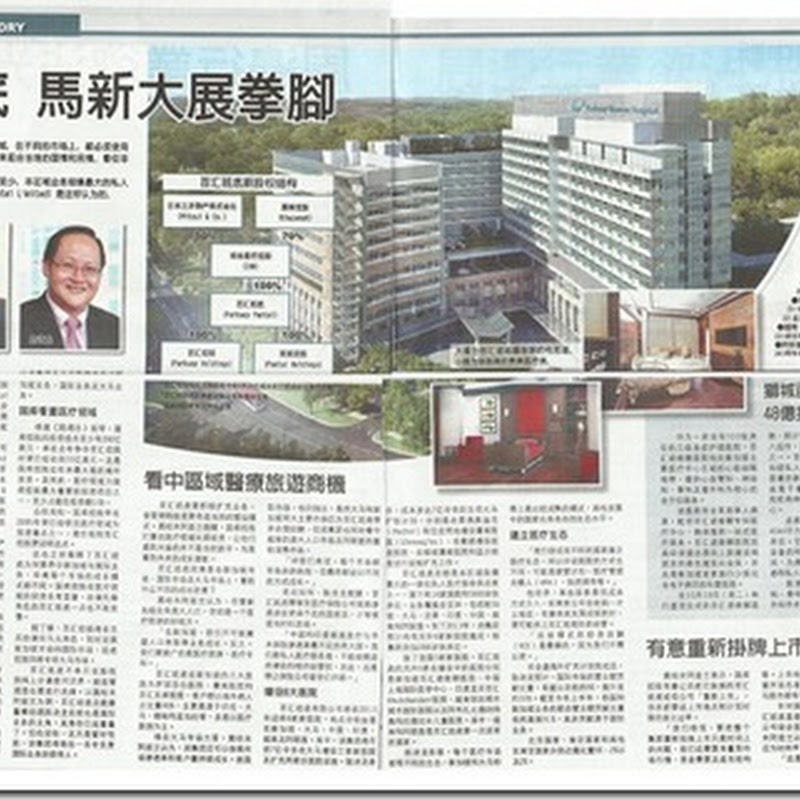Although the delisting of AirAsia Bhd is on the cards, there are concerns about how the carrier’s major shareholder will fund the privatisation and the large aircraft deliveries that are coming soon.
It will cost Tune Air Sdn Bhd about RM2.2bil, or RM1.35 a share, to delist AirAsia. Well and good if it has lined up investors from the Middle East to Britain to help finance its mission but, until details are made transparent, funding will remain a concern. Kuwait Finance House denied it was an interested party, saying that “being an Islamic bank we cannot fund a buyout of a company that has conventional debt.’’
Tune Air’s delisting plan is subject to change as it hinges on market conditions. A submission was said to have been made to Bursa Malaysia, with the Securities Commission and CIMB Merchant Bankers Bhd being the advisers for the privatisation.
AirAsia is also expanding and taking delivery of more aircraft at a time when experts are warning that the next 12-18 months (Oct 2008 – end 2009) will be extremely difficult for Asia Pacific carriers. The Association of Asia Pacific Airlines has predicted that some airlines will not survive the current crisis and it is extremely cautious about prospects of the airline industry in 2009. Since the oil spike, about 26 airlines - including some low-cost carriers in Asia - have gone bankrupt so far.
AirAsia has ordered 175 aircraft with 50 more under option - that puts the carrier as potentially one with the largest fleet in the region. Thus far, AirAsia has taken delivery of 45 A320s, with six more later this year (2008), 14 next year (2009) and 24 in 2010. Funding has been arranged for 60 aircraft purchases until June 2009.
AirAsia needed about RM4bil to fund aircraft buys from July 2009 to December 2010. This should be a challenge for AirAsia amid the backdrop of an ongoing global credit crunch and air travel demand getting slower. Banks might also be more reluctant to give AirAsia 100% financing for aircraft purchases due to the fact that they might not have as much funds at their disposal for lending and aircraft values were under pressure. AirAsia would have to bear higher interest costs on future loans to reflect rising credit spreads ... a weaker ringgit will make US dollar-denominated acquisitions more expensive than previously anticipated.
With more debts the carrier’s net gearing ratio of 1.9 times presently will rise. As at end-June 2008, it had debts of RM4.3bil and cash reserves of RM1.1bil.
With slower growth in air travel, even though AirAsia was expanding rapidly, it might not be able to generate enough cash flow to pay its debts going forward.
AirAsia has ordered 175 aircraft with more than 50 under option - that puts the carrier as potentially one wiith the largest fleet in the region. All these factors will have an impact and may drag the share price down since market players rarely favour companies with large debts.
AirAsia also does not have a dividend policy to keep investors interested. To the major shareholder it seems pointless at this juncture to keep the company listed only to see its share price battered. Privatising will take it off the radar screens but it does not resolve the funding issue either.
*******************************
Industry observers said AirAsia Bhd’s privatisation deal could cost between RM2 billion and RM2.2 billion. The privatisation price could range between RM1.50 and RM1.60 based on a 20% premium to the current share price, bringing the total cost to about RM2.19 billion.
If it were similar to the Maxis privatisation, investors can be found to take up strategic stakes; short-term bridging loans to fund the privatisation would not be an issue.
However as a listed entity, it would have better access to capital markets for financing its fleet expansion programme. The budget carrier would take delivery of 17 Airbus 320s next year and 23 the following year. Therefore the privatisation is unlikely to materialize.
Another factors weighing against any potential privatisation is the significantly increased financing costs of AirAsia’s expansion programme as the benchmark London Interbank Offered Rate (Libor) has risen to near record levels of about 4.5% for US dollar-denominated borrowings. AirAsia’s financing costs could increase by another RM100 million in FY2009 if LIBOR remain at current levels — assuming no change in AirAsia’s credit standing.
However, the privatisation could succeed if investors were available to take up stakes in the privatisated entity. It is believed that EPF could be willing to increase its stake in AirAsia while other possible investors could be financial institutions that provide aircraft financing including Kuwait Finance House and Calyon. The Virgin Group could also be another investor.
FBM KLCI - likely to continue uptrend to test immediate resistance of 1,690
-
Stocks on Bursa Malaysia ended higher Friday with the benchmark FBMKLCI
concluded the week on a stronger note, reaching a more than six-year high
due t...
1 hour ago





















































No comments:
Post a Comment